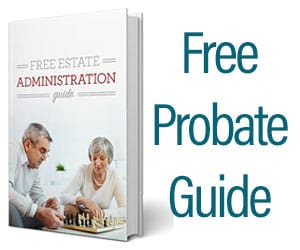After the death of a loved one it’s up to the executor of the will to create an inventory of the deceased’s assets. This is an essential step in the probate process, and one that must be handled carefully. It’s only by creating an accurate idea of the deceased’s assets that the value of the estate can be estimated, and divided up among the estate’s heirs and creditors. This article will give you a good idea about how to create an inventory of assets and accurately determine the value of the estate.
1. Acquire the Probate Inventory Form
The first step in creating an inventory of assets is to acquire the correct form that will allow you to list the assets. In some cases you may be able to download this form directly from the court’s website. In other cases you may need to actually go to the court building, or request that a copy be mailed to you.
2. Find all of the Assets
The next step is to determine what the estate owns. To do so, it may be helpful to think like a detective. You’ll need to account for all of the deceased’s property, even if it’s difficult to locate. For example, there may be a piece of property in the estate located on the other side of the country, or valuables stored in a safe in a distant bank. It’s essential to locate all of these assets in order to determine the full worth of the estate.
When looking for assets, it can help if you have a good idea of what exactly you’re looking for. Of greatest importance are deeds and titles to property, jewelry, art, vehicles, and any assets in a bank or mutual fund. Usually, items such as furniture do not need to be detailed individually, they can be grouped together into a category such as “dining room furniture”.
In locating hidden assets, such as out of state property or unknown valuables, it can be useful to look through the deceased’s records. For example income tax returns, business records, securities, broker’s statements, and insurance policies may all give you clues about assets that you didn’t know the deceased was in possession of.
3. Ignore Certain Assets
Some assets can ultimately be ignored, as they don’t factor into the final value of the estate, but are required early on to be reported on the inventory. Some assets are not able to be tapped to pay creditors, so they are exempt entirely from reporting, and it is sufficient to simply report that such property exists, such as life insurance with designated beneficiaries, Individual Retirement Accounts with designated beneficiaries, and real property held as tenants by the entirety. Jointly held property, such as real estate or joint bank accounts with a right of survivorship may be reported, but ultimately may not need to be reported or referenced again in the estate administration process. The only exception to this is if the “estate” assets are depleted and the other property is needed to pay debts. Upon death, all of these assets automatically transfer to the joint owner of the account, subject only to the executor’s right to recall this assets to pay debts should the estate not have enough individually-held property to pay debts.
While these assets won’t enter into the probate process, you will certainly need to create an inventory of them none the less. You will also need to provide documentation proving they are jointly held with a right of survivorship or have a designated beneficiary. In the absence of such proof, the Court may require you to count them as individual assets.
4. Determine the Value of the Assets
If you’re the executor of the will there are various ways to evaluate how much the estate is worth. In some situations this is straightforward. For example, the total amount of money in a bank account is clear and can rarely be contested. However, other items may need to be professionally appraised. Jewelry, vehicles, artwork, and property may all need to be appraised in order to determine their fair value. Often, tax values or Highway Use Estimates obtained from the DMV can be used to provide a value for vehicles.
Also, the executor should be aware of how to determine the final value of an asset with a dynamic value like a stock. The final value of an item that can change in worth from day to day is determined on the date of the deceased’s death. Thus a stock is valued at the price that it sold for on the day that the owner died.
5. Create a List of Debts Owed
Going through the deceased’s paperwork should give you a good idea of all of their debts. These may be medical bills, car payments, mortgages, insurance payments, or credit card debt. Before any of the assets are distributed to the heirs these debts must first be paid off. In order to ensure that all creditors have a fair chance to make any claims on the deceased assets, you’ll need to place a piece in the newspaper, letting creditors know of the death.
6. File the Inventory Form with the Court
The final step in creating an inventory of assets is to file the inventory form with the court. This needs to be done within a certain timeframe. In North Carolina the inventory form needs to be filed within three months of the qualification date. This inventory form should list cash assets, and non-cash assets that have had their value determined by an independent appraisal. The inventory form will be audited by the Clerk along with all substantiating proof you provide.
Making the Inventory Process Easier
Depending on several factors, such as when the deceased died, the value of their estate, and any taxable gifts that they have bequeathed, some state and federal taxes may be due. In order to ascertain what taxes are required you should contact state and federal tax authorities. Alternatively, you may want to hire an accountant to work with you through this process. If the deceased owes thousands of dollars in taxes, or if there are complications with the paperwork, it almost always pays to hire a professional to ensure that everything runs smoothly.
Finally, if you’re the executor of the deceased’s estate, you may want to hire a lawyer to help you manage the inventory process. This may be especially useful the more assets there are to take into account. A lawyer can ensure that all paperwork is filled out correctly and submitted on time. They’ll also be able to advise you on any other aspect of the probate process that you may have questions about. If you live in North Carolina and you need a probate lawyer, consider Hopler, Wilms, & Hanna, PLLC. We have more than a decade of combined experience working on probate cases, and we can help to make your life easier as you navigate this difficult time. Give us a call today to find out what we can do for you.


